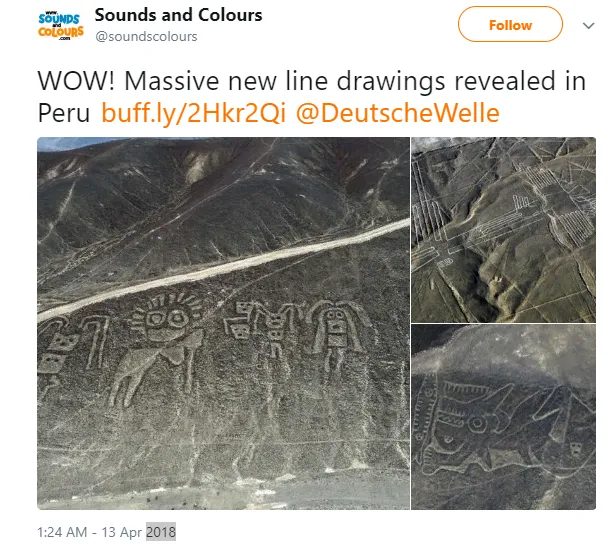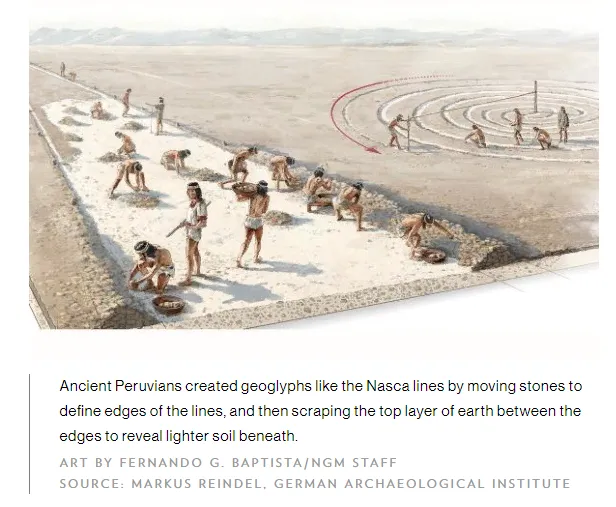"New" geoglyphs have been discovered in Peru. They were discovered using drones with 3D scanning tech. They are older than the famous Nazca Lines. They are protected by UNESCO.
More "new" Peruvian history!
A geoglyph is a large design or motif (generally longer than 4 metres) produced on the ground and typically formed by clastic rocks or similarly durable elements of the landscape, such as stones, stone fragments, live trees, gravel, or earth.-
Wikipedia

Archeologists believe the Palpa drawings were created by the Paracas and Topara cultures between 500 BC and 200 AD, which would make them older by many centuries than the famous Nazca lines in the neighboring Nazca Valley.
And unlike the renowned Nazca sketches that were etched into the high desert sand and are only visible from above, the Palpa geoglyphs were found on the slopes of the region's hills, meaning they can also be observed from the ground.
READ MORE HERE:
https://www.usatoday.com/story/news/world/2018/04/13/massive-new-drawings-revealed-peru/513812002/


National Geographic article and video on it:
Exclusive: Massive Ancient Drawings Found in Peruvian Desert
Armed with satellites and drones, archaeologists discover new Nasca lines and dozens of other enigmatic geoglyphs carved into the earth.
Read here:
https://news.nationalgeographic.com/2018/04/new-nasca-nazca-lines-discovery-peru-archaeology/
Ancient Architects has made a 6 minute video going over the details:
Etched into the high desert of southern Peru more than a millennium ago, the enigmatic Nasca Lines continue to capture our imagination. But recently, using drone cameras, scientists have discovered new spectacular line drawings in Southern Peru – and they are much older than the famous lines of the Nasca province.
Until this recent discovery, we knew of more than a thousand of these line drawings, also known as geoglyphs or ground drawings, that sprawl across the sandy soil of the Nasca province – a little-understood practice that some believe was to encourage rainfall, whilst others think they may represent star constellations, although all the ideas remain speculative.
Now, Peruvian archaeologists have discovered more than 50 new examples of these mysterious desert monuments in the adjacent Palpa Province, traced onto the earth’s surface in lines almost too fine to see with the human eye. With the help of drones, archaeologists have mapped them in never-before-seen detail. Watch this video to find out more.
I really enjoy seeing technology aid in revealing ancient history. Thanks for stopping by! Take care!

